In 1914 the British Navy had a problem according to Winston Churchill, a big one.
Sure its Navy was the best in the world, but the advent of the Dreadnought Class, and Germany’s adoption of submarine technology had rendered – in his mind at least – the bulk of the fleet obsolete. Thinking of ways of usefully employing this ‘stranded capability’ he landed upon the Dardanelles, and a naval clearing campaign knowing the cost would be high, but what else could they be usefully employed for?
Now we know that turned into a completely different type of campaign, one which Churchill later decried, but the conundrum is a useful one for us – how do we know, and what do we do, when a Defence asset becomes stranded? This blog will argue that we have such assets now – and that different thinking, perhaps like Churchill’s, is required to extract latent value from them.
Stranded Capability Defined
The term Stranded Asset comes from the world of economics. Stranded Assets are those that 'have suffered from unanticipated or premature write-downs, devaluations or conversion to liabilities'. Applied to defence we will define Stranded Capability as those assets that 'have suffered from accelerated or premature dilution of their effect or purpose'.
The lesson from Churchill is twofold: (a) there is seldom agreement amongst stakeholders about the degree or speed of effect/purpose dilution, and (b) even if there is a level of agreement, what to usefully do with that stranded capability is rarely simple to agree.
The 2020 Army Reserve – Stranded Capability?
Australia has been investing in an Army Reserve for a long time. Much like example of Britain's Royal Navy, spending billions of today dollars on a capability makes it very hard to rationally assess whether the current capability can generate the effect, or achieve the originally intended purpose. I highlight the phrase 'originally intended', because the most common method of defeating the accusation of being stranded is to carefully re-define why we invested in the accused capability to begin with.
The Army Reserve of today can no longer deliver on the purpose for which it was conceived. As a mobilisation base, and as a follow-on force, the Reserve offers at best a diluted effect. In 1948, when a 50,000 person Citizen Military Forces (CMF) was raised alongside a 19,000 strong regular Army the purpose was clearly linked to structure. A broad base as the growth foundation for a tip of the spear professional element. Whether 19,000 v 50,000 is the right ratio is an important question and one we know was debated then. But we should be able to deduce that (today’s ratio of) 30,000 regular and 15,000 CMF was unlikely to be assessed as ‘equally valid’ by 1948 planners. No, the ‘Reserve as a National Mobilisation Base’ argument is dead.
As Churchill experienced in 1914, the critic responds 'no, the purpose of the Army Reserve has changed, your analysis is dated'. Ok, what then is the purpose of a ‘contemporary reserve’? Broadly and simply, the argument shifts to niche capability and geographic engagement. The contemporary Australian Army Reserve contains a series of skillsets such as medical and logistics, sometimes extending into very narrow warfighting skillsets, all of whom are described as personnel that are too small, fragile or expensive for the full-time Australian Defence Force (ADF). A second contemporary purpose, the Reserve is the ADF’s ‘link to community’ as full-time capability moves to remote bases where they can more freely train and operate.
Well, again, if this is true the connection to purpose is diminishing as those niche skillsets are easily accessed via more agile commercial vehicles, by allies or by analogues in the ADF e.g. Reservist Cavalry Scouts. No thanks, I’ll just use 1 RAR. And when it comes to community connection this is today provided more efficiently through technology and frankly, by cadets. In 2020, in every case, there seems a more efficient and effective way to generate the effect our Army Reserve offers.
Extracting Value Later in the Lifecycle of an Asset
What would Churchill do with Australia’s Army Reserve of 2020? Well, he’d use it.
He would find a new purpose, one that extracted every last ounce of value from it as it enters its latter days. Many will react to the idea that we are in the ‘latter days’ of the Army Reserve. Similar people felt similarly in the latter days of horse artillery, the steam train and the telegraph system. The world moves forward. Our Army Reserve will not deploy to into the South China Sea, or the Korean Peninsula. But could it be useful elsewhere?
The first obvious answer is as a response tool for national emergency. This is a ‘lower probability of call out/for, high domestic profile’ tasking. Whilst it feels ‘high probability’ at present the long term historical perspective would suggest this tempo is rare. But the skillset is quite different – it’s a utility purpose, not a specialisation one. For Op Bushfire Assist it was engineering, chain saws and PMV, but for COVID-19 it will be different, and for the crisis after that different again. Re-purpose the Reserve as a high utility, federal domestic response asset.
Could the Reserve be converted to an industrial asset? A more speculative re-purposing of the Reserve would be as an ‘economic plug’ in the event of regional or national economic instability. Woolworths supply chain fails? Task the Reserve. Factories in Western Australia empty? Call for... Harder to see the contingencies perhaps – but already we’ve seen an early Defence Aid to the Civil Community (DACC) task in Victoria that involves ADF personnel deployed to industrial manufacturing. Perhaps there are other ‘active in event of emergency’ industries the Reserve could be re-purposed to.
A third idea could be to generate purpose through geography. Perhaps the Reserve could morph into the Government's South West Pacific Strategy, with a purpose to circulate formed bodies of t-shirt clad soldiers to the region to build, educate, grow, repair and sustain communities in that part of the world. Perhaps a set of new purposes could be developed and trialled? Certainly there will be a number of novel ideas tabled if Reserve ‘purpose dilution’ is agreed and a call to action raised.
Train Hard Fight Easy
An important corollary in this argument is that if government concludes the Army Reserve is a Stranded Capability, then it should break the nexus around ‘warfighting investment’ and fund it for the tasks it will do. The government should not continue with the funding argument which is prevalent now that part-time forces need to be trained and geared for mid-to-high intensity warfighting, then deployed on low intensity national operations.
Giving up on the dream of a Reserve Battle Group on the Korean Peninsula will be tough for many - in and out of the Reserve. Churchill wouldn’t care and we shouldn’t either, because the real battle is for relevance. Stranded Assets – if not addressed – become Irrelevant Assets. Irrelevant assets have no economic, social or national value – let’s not allow the Reserve to drift there.

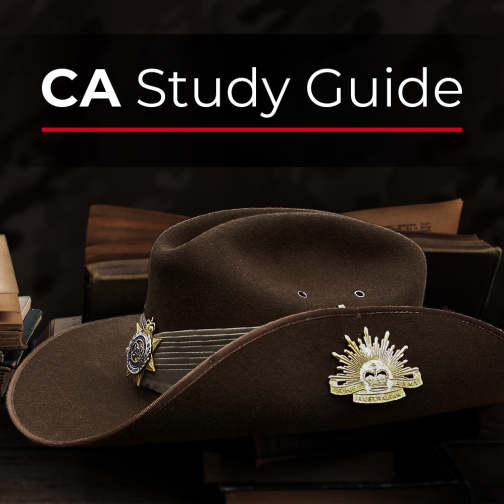

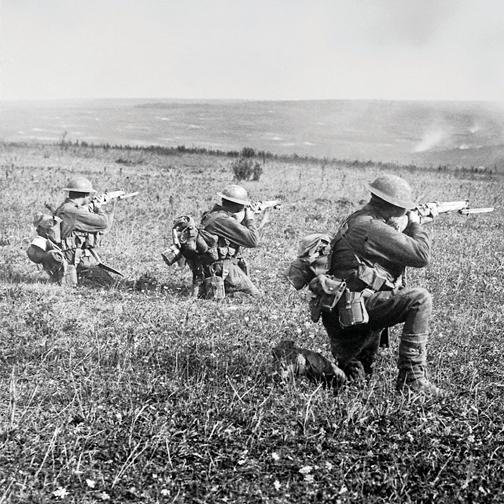



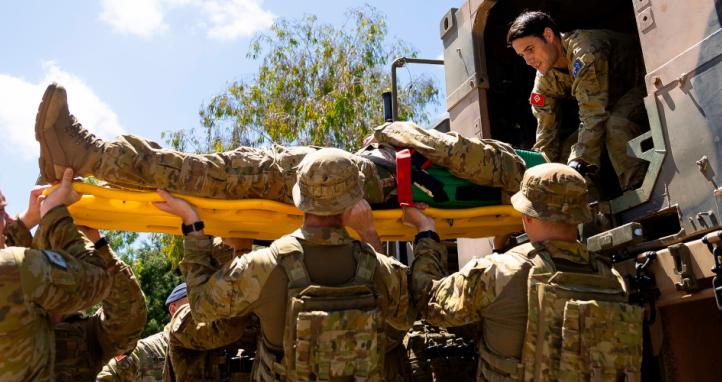
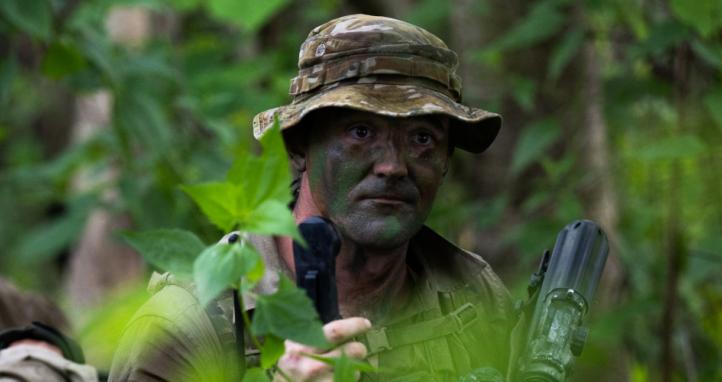
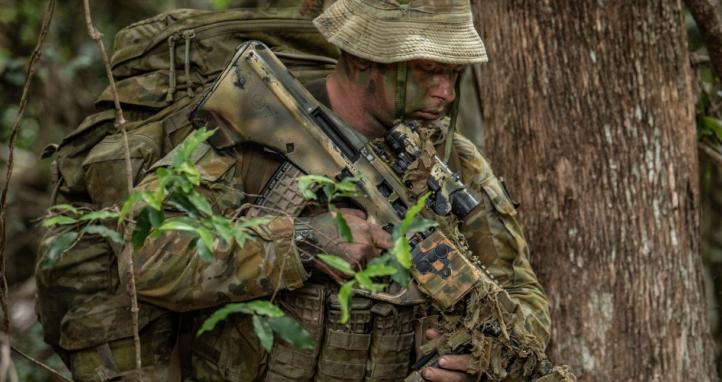
As for dreams being dashed about a Reserve BG on the Korean peninsula, I'd suggest anyone with such dreams should have parked them a long time ago. The reserve/militia didn't supply a Battalion during the Korean War, even when it was structured for 50,000 troops. I doubt it could supply a sufficiently capable and protected one now, nor would it be useful to the ROKA given the size and sophistication of their largely conscript force.
There is validity in the position that the reserve should look closer to home for its value proposition. Reserve capability has been useful and responsive in recent national disasters. All-reserve units proved their worth in The Solomons, Timor-Leste and Rifle Company Butterworth. To be better at such roles, the Reserve should quit trying to imitate the Regular force/HR structure. Do away with corps, instead generating an all corps reserve capability. The effort saved in training so many corps with long training and upskilling could be reinvested into a capability which supports local security and emergency responses and can deploy to low level Pacific security support. This aligns with Government strategy and is a realistic training load for part-time soldiers.
With RAE having to rent from Kennard's, PMV RU or XX due to a lack of RAEME support, no OE to exercise and of course Governance that merely provide a depot's approval to remain open - perhaps the issue might be 'leaders' who under think and should embrace the mid-nineties rationale of the ARES. At that time interoperability, round out and support to operations were the buzz words. Indeed most ARA units could not deploy without supplementing with Reservists (still happening now) let alone train or conduct exercises to achieve readiness. In fact when a coalition partner can't tell the difference - you know your punching above your 20+ days a year weight.
As for the SCS - perhaps 2 RAR could row there. Joint manoeuvre if effectively planned, shouldn't need to know which element is coming (full time or part time) - its about delivering an effect across the domains. There are a few Reservists who know more about employing Multi-domain effects than their full time peers, and they don't have to row out there either. The Divisional deployments for HA and DR within our Region once consistently deployed Reservists (and no they weren't Vets or niche skill sets) - because the full time personnel had no confidence nor experience in intergovernmental - interdepartmental integration. Sometimes you need to remove the kinetic from humanitarian operations.
If 1 RAR need cavalry scouts - they could read some doctrine, understanding effects based operations and then, work out what they can do and for who (note: they are an ARES RAAC capability because that Corps won't even provide them a platform that can work within the ACR construct).
I do believe the 'poor read headed step daughter cousin' analogy suitably describes the level of intent for the ARES to provide capability and hence why it could be conceivably 'stranded'.
Bias and poor understanding (sounds like leadership) consistently fails to see the agility of a part time force. We need to stop planning for what we see and consider what the future holds. Core grounded skills whether they be kinetic or non-kinetic, is a smart Force. We don't need Churchill for that one!
Australia has poorly missed the effects of deploying Military units on sovereign soil. Presence Posture Profile - sounds familiar? The information effects of a cohesive society willing to adapt and demonstrate we mean business is enduring.
My special thought - it's about Service, the ARES have always been willing to put their hands up, that's why its a second job. They can't turn on a dime due to the less than optimal training and equipment, but they can turn up if they can de-conflict their full time job and family.
The issue maybe is that 'leaders' expect too much and are ill informed of capability, readiness and a lack of emotional intelligence to employ the 'Total Workforce Model'.
I'm sure many full time personnel have joined SES, RFS, St Johns Ambulance or other forms of volunteer or paid service to find the value of putting another's interests above your own whilst maintaining a full time job.
You are correct - the time is right to develop a Total Workforce White Paper with readiness the issue and the context is likely tasks. Warlike operations is a poor litmus test of the ARES and I believe its time we let the ARES lead and manage its own.
Rather than blame/highlight what the ARES has become (or how it got there) - embrace the future, the people we serve and serve us.
Looking at the problem now, there seems to be an obvious answer for the role of the Reserves. But, keeping an Army in Motion lens on reminds us we should be able to refocus forces to environments they are not immediately postured for. This creates a necessity for our training approach to be adaptive and our leadership methodology contingency-based.
Brandishing the entire ARES with the same brush as the largely irrelevant role of Cav Scout seems to do away with an entire organization because one facet of it is not fit for purpose.
Comparing the ARES to outdated technology is incredibly wasteful and negligent comparison. Aside from providing a supplementary force to the regular Army, the ARES also provides a landing pad for full timers who are transitioning out of ARA service and into Civie Street. The psychological impact that this has on them, being able to be around fellow soldiers as they attempt to begin a new life, should not be compared to some aging and useless technology and there for disregarded. Additionally the operational knowledge and skill set they bring from the battalions is used to further bolster the effectiveness of their new unit.
Army reserve units have deployed alongside full time units in the US and UK for decades, it’s nothing new and widely accepted by full timers due to the varying skillsets that reservists bring to their roles. ARES personnel are completely capable of supporting med-to-high intensity warfighting while also deployed on low intensity operations domestically, something my company has been doing for the last 3 years. However, attempting to rebrand the ARES as a civilian DACC emergency taskforce only will see its numbers evaporate to nothing. If people wanted to join the SES they would have.
What is needed is a change in mentality in the upper echelons of the rank structure of what the ARES is capable of. There is a group of highly motivated and committed individuals who have decided to set time aside from their full time work and family lives because they love what they do in the Army reserve. Better training and support infrastructure is what is required to better mobilise the ARES. It seems odd to be calling the disbanding of such a diverse and effective force when regional tensions have arguably been at their highest since the end of the Cold War.
The ARES doesn’t need to go. The level of training offered needs to be increased to close the capability gap and as much as it hurts, the ARA needs to learn to share the deployment cake. Additionally, removing the outdate law that the ARES cannot deploy overseas would see it become a relevant contemporary force. Something our allies learnt was beneficial long ago.
This is an irrelevance. Whether or not we’re talking about the Militia or the CMF or the ARES, the purpose at the time it was conceived cannot be thought to be set in stone; purposes and mission statements must evolve as circumstances change. Stakeholders demand that this happens; realising that, otherwise, we’d never be ready for the challenges ahead.
This is different. “Stranded Assets – if not addressed – become Irrelevant Assets. Irrelevant assets have no economic, social or national value – let’s not allow the Reserve to drift there.”
Now this is stakeholder language and would be applauded at the AGM!
What is working as far as the ARES is concerned? From my pov, I see civilian specialists (such as doctors, lawyers, engineers etc) being recruited and usefully employed (thereby saving the Army money). I also see some non-specialist personnel (eg. infantry) being deployed overseas to supplement regular personnel (thereby saving the army money).
What is not working as far as the ARES is concerned? Army roles which involve the operation of complex equipment, eg. AFVs, are considered beyond the capability of the ARES. (The Army saves money by not having to procure materiel to equip them.)
Where to from here? Firstly, we have to get away from a reliance on ‘catch phrase’ thinking. ‘Army in Motion’, Accelerated Warfare’, ‘Future Ready’ etc. In terms of the ARES in particular, we have “One Army”, which PR link to the theme ‘our full and part-time people who have one mission: to prepare land forces for war to defend Australia and its national interests’.
Let’s accept that the regular army and the ARES are different. Some components of the ARES are interchangeable, while others are not. How can the ‘others’ best add value to Army capability? This must be related to the contingency plans which flow from our National Defence Strategy. Associated with this is the matter of lead times for training of those who are to operate specialist equipment. If we are self-reliant in terms of the equipment and stockpiling aspects of our defence strategy, are we equally well positioned in terms of trained personnel (recognising that skills are needed to both operate the equipment AND to use it effectively tactically).
Seems to me that part of our National defence Strategy must relate to the ability to provide trained personnel within a certain time-frame; this, in turn, suggests an ARES training capability for operators of specialist equipment, e.g. LAND 400 AFVs.
It was not established as "a mobilisation base, and as a follow-on force", which was the purpose for which the CMF was re-raised after World War 2. Rather, the purpose for which it was organised between 1 March 1901, when the armed forces of the federating colonies became the Australian Army, and 1911, when the first compulsory service program was introduced, was the defence of Australian territory.
Under the 1903 Defence Act, the Militia/CMF could not serve outside Australian territory. When forces were required for such service, they were raised voluntarily, as the First and Second AIFs, and then K Force to supplement the new ARA in Korea.
The second compulsory service scheme, in the 1950s, was to provide "a mobilisation base, and as a follow-on force", but for all practical purposes that role ended with end of that scheme and the Pentropic reorganisation of the 1960s.
While there has been much emphasis in the past few months on those DACC tasks to which Colonel Kalms alludes among his options for the "stranded asset", including bushfires, floods and COVID19. These are all valuable uses of a locally raised force, however, the international terrorism which preceded them has not gone away. A force to guard local vital assets and to contain incidents until help arrives remains essential.
Such a force does not need to be able to mount a combined arms offensive against a major army, nor should it "dream of a Reserve Battle Group on the Korean Peninsula". It needs to be disciplined, competent with small arms and at patrolling and tracking, and know its local territory.
Just as the Militia/CMF of the early 1900s was intended to be. The asset is not "stranded", it is just being misused.
Meaningful service options and the respected status of units helps attract former full-timers and retain Army’s investment. Complex capabilities should be avoided. Oversized vehicles with expensive facility/training needs may not be suited to part-time units. Commercial options that recognize extant civilian qualification and don’t damage community roads offer a better fit. MILSPEC equipment may have limited utility interoperability with other agencies. Perhaps COTS options that use civilian skills are better than extensive training on unavailable MILSPEC assets. Some trades and corps are not sustainable in part-time units. Limited access to platforms will challenge force integration models. Options to serve on deployments is needed for those that meet readiness needs.
Civilian skills can be better used. Frameworks for tracking civilian skills needs modernizing. Rigid policies should not limit the agile application of civilian skills. Pers on recent ops included paramedics, vets, cyber experts, IT techs, plant operators, emergency services, electricians, engineers, linguists, chefs and other critical skills. Army leverage little of this asset. Pers may find Army’s technology/processes behind their civilian industry and many are leaders in their field, yet we rarely seek their innovation ideas. Service conditions requires a review, with some viewing SERCAT 5 as a casual workforce. Many SERCAT 5 pers will have served 100+ days this year, job security, career progression, relationships and health (no rest) at risk. Would Army allow SERCAT 7 teams to take 100 days AL/LWOP away from families, to work for another agency?
Times have indeed changed, I have seen equipment and access to facilities reduced. With corporate governance increased to the point that we are so heavily geared that it takes a mammoth effort to even train, and even more to deploy. Coupled with ARA staff that come and go, some interested some destructive and many with a sense of seniority.
There is a range of reasons for change but most will already know so I won’t humour you with the details but my end state would be the following.
Link each Reserve unit with a dedicated ARA unit in the same core, almost like an adopt a regiment initiative, and engage in training when and as it happens. Sharing the learning instead of reinventing the wheel.
Regardless of the cost, fly southern reservist up to the Brigades to train using service means. There we will have the equipment, the know how and work with professionals that we can learn from instead of settling with posted ARA members who are transiting to other lives and simply don’t engage or care in Reserve exercises.
Recruitment will increase because it’s exciting, and an adventure and something to be proud of.
Skill base and engagement will increase and the value to the greater war fighting force will be realised, asset unlocked and enhanced.